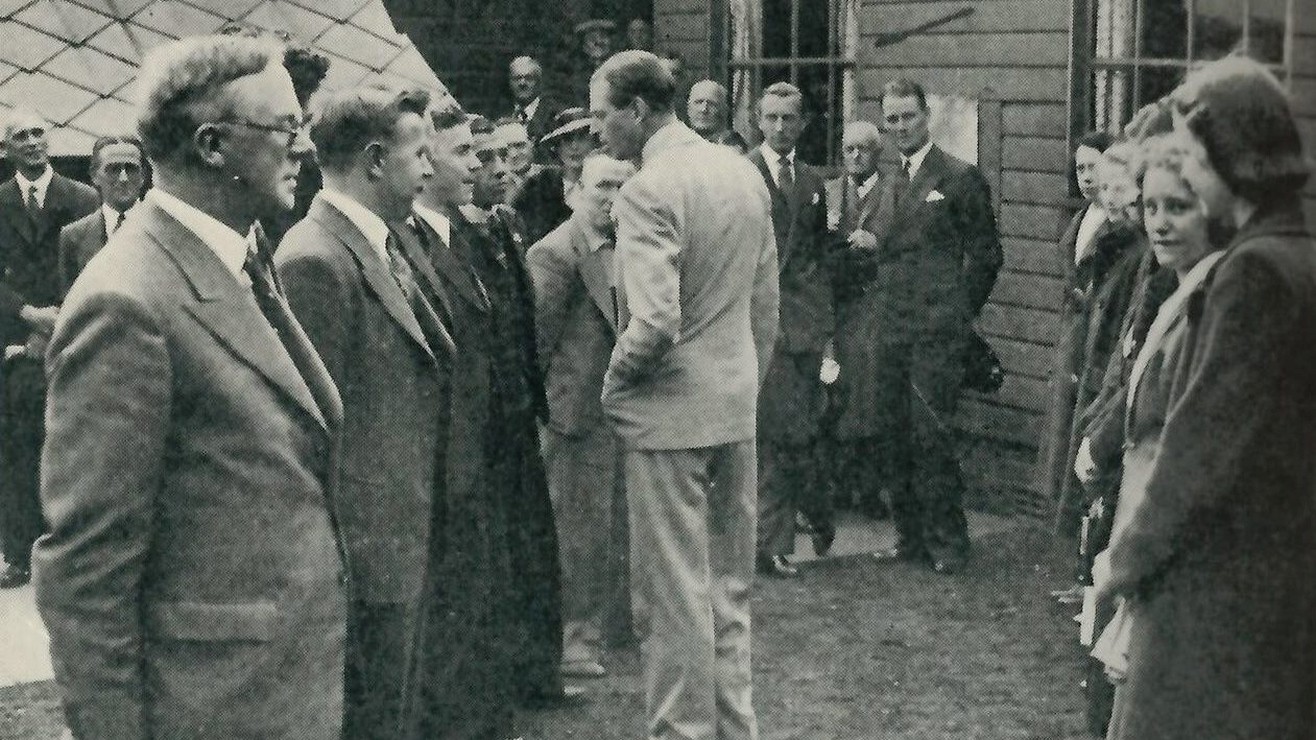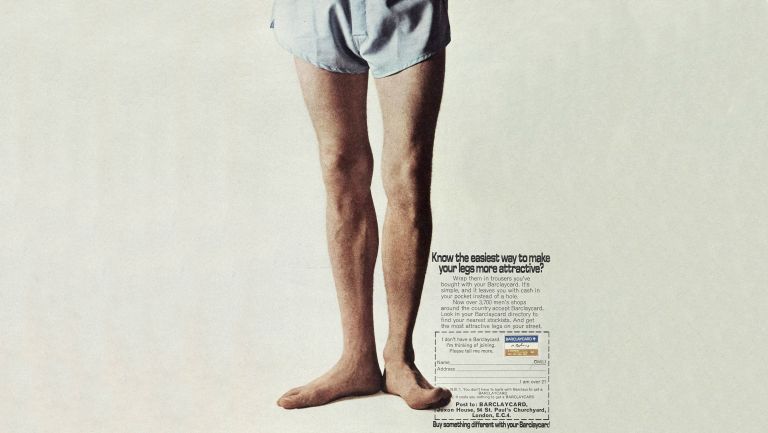
From the archives: Legs, camera, action
What happened when David Bailey shot an ad for Barclaycard?
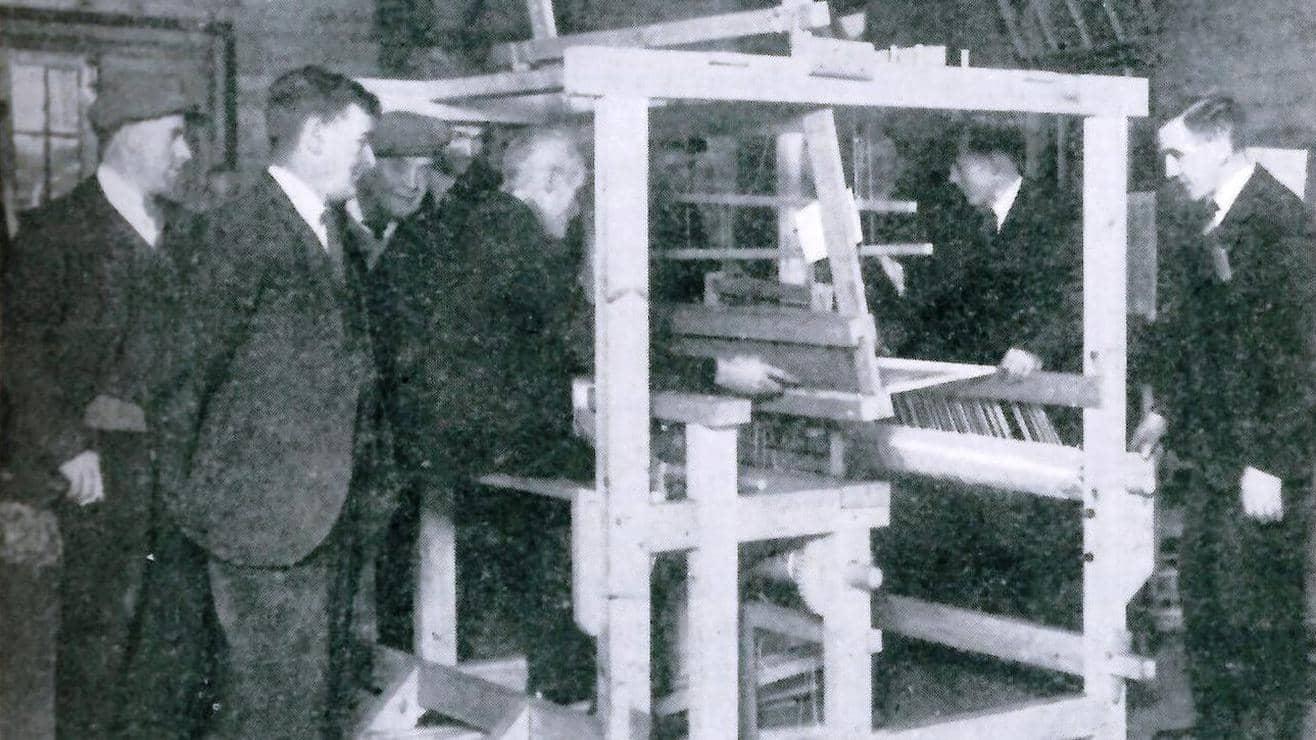
“When the communities in which we live and work thrive, we do to.” That’s the mission statement of Barclays Eagle Labs, a UK-wide network of innovation spaces designed to drive local economic growth, support job creation and provide community resources. Take away the digital connections and the modern-day ‘ecosystem managers’ and replace the 3D printers with a loom, and it’s not so different from a Barclays story from 80 years ago…
During the Great Depression of the 1930s, the West Yorkshire mining village of Featherstone was badly affected by the economic downturn, but was not included for relief in the government’s Special Areas Act of 1934. The town’s desperate situation caught the eye of a Mr R C Olley at Barclays head office.
Through an appeal in Spread Eagle – Barclays’ staff magazine – Olley organised a scheme to provide relief to the community and build a new community hall. Starting in 1934, subscribers gave up to a shilling a month to the fund, aiming to help what the magazine described as “one of the most stricken mining towns of the North.”
The Duke of Kent visited in 1939, remarking that he was “impressed by Featherstone’s fine Centre” having seen members cobbling, machine-knitting, working hand-looms, and making rugs.
In building the new hall, the intention was to provide community facilities including workshops for training and the mending of clothes, shoes and furniture, and space to grow vegetables for those in need. A loom was installed, giving local people the opportunity to improve their employability by learning weaving skills.
In 1937, the Spread Eagle reported that the centre had 486 members and “the activities in which they are able to indulge leaves no doubt as to the value of the assistance provided by the Fund. They include a number of crafts for both sexes, as well as social relaxations and holidays, which could not otherwise be enjoyed.”
The magazine also reported on a visit from the Duke of Kent, saying he had been “impressed by Featherstone’s fine Centre” having seen members cobbling, machine-knitting, working hand-looms, and making rugs during his visit.
The fund – which, by the end, had over 700 subscribers – finally closed in 1946, as full employment and the beginnings of the welfare state improved conditions for Featherstone’s population. By then, the total raised by the fund stood at a precisely accounted £1,427 9s 2d (£51,000 in today’s money).
“With an income from local sources now sufficient to cover its expenditure,” said Mr Olley, “the Centre is a focus of public activity, and social events have yielded a profit from which local charities have benefited, while the Army Cadets, the British Legion and other organisations use the Centre as their headquarters. It is pleasant to know that we have helped to lay the foundation of a useful and lasting institution in Featherstone.”

What happened when David Bailey shot an ad for Barclaycard?
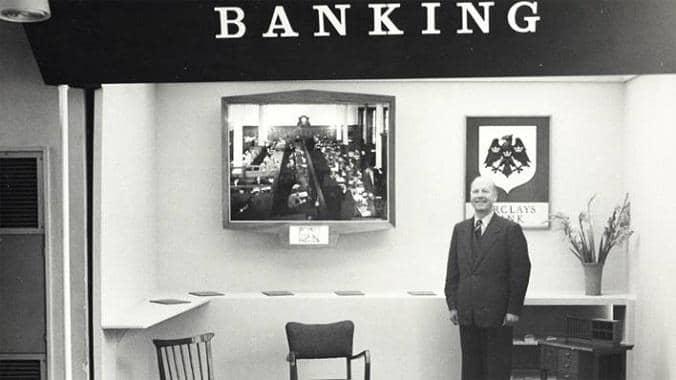
The drive for Barclays to identify top talent began more than 325 years ago
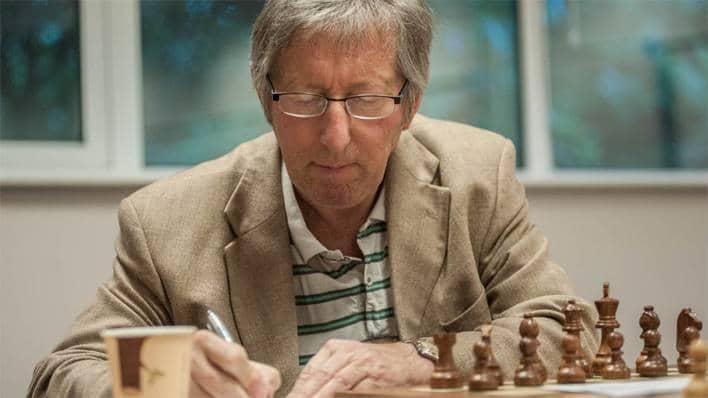
Keith Richardson was the first British grandmaster of correspondence chess – and worked at the New Covent Garden Market branch of Barclays Bank
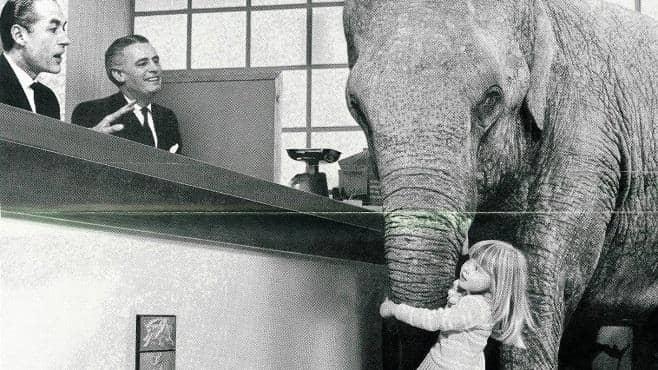
We take a nostalgic look through the Barclays archives at how the bank has promoted its children’s accounts through the decades
